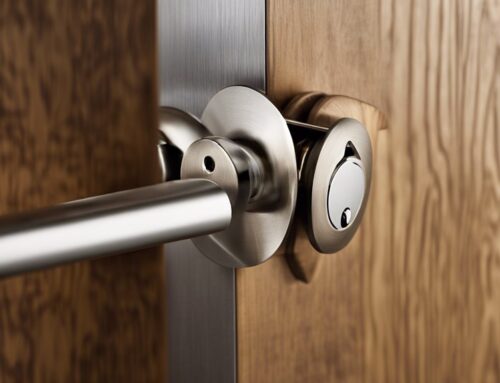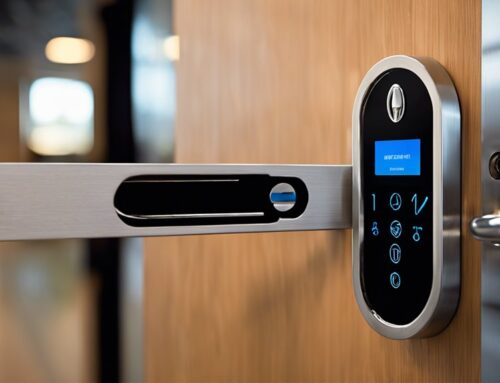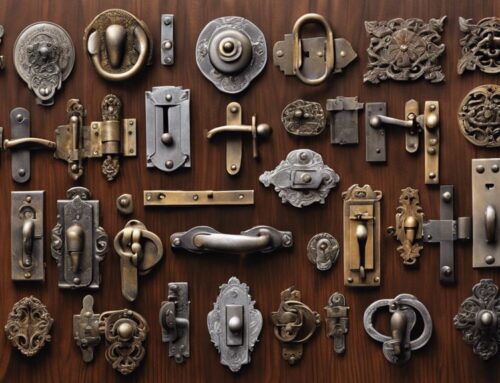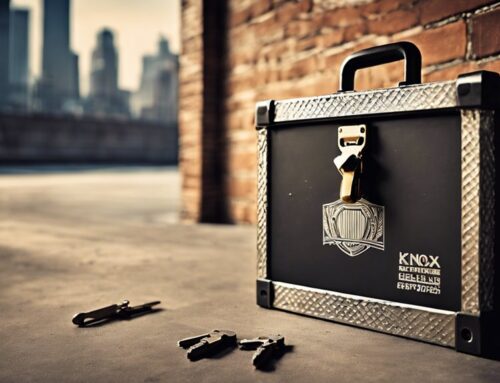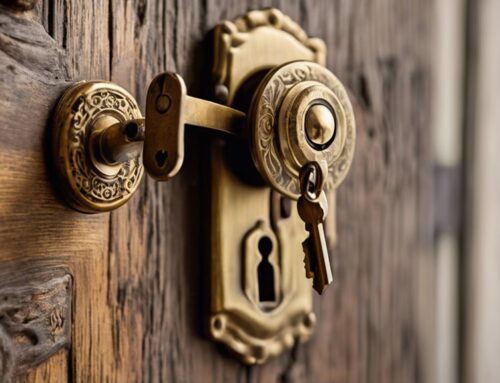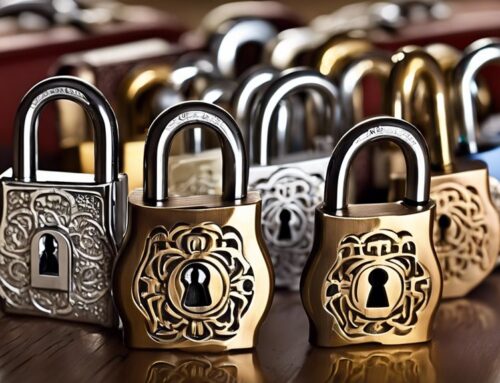Isn’t it fascinating how a simple twist of a key can determine your security? High-security pin tumbler locks have evolved to integrate cutting-edge features that greatly enhance protection against unauthorized access. With their sophisticated pin configurations and robust materials, these locks provide a formidable barrier. You’ll discover that innovations like patented key designs and anti-bump technology are just the beginning of what these locks offer. So, what does this mean for you and your property? Examining these advancements can shed light on the essential role of security in today’s world.
Key Takeaways
- High-security pin tumbler locks utilize advanced technology, including unique key designs and restricted keyways, to prevent unauthorized duplication.
- Incorporation of BumpStop technology enhances resistance against bump key attacks by maintaining pin security under pressure.
- Innovative pin configurations, such as anti-bump and anti-pick pins, complicate manipulation attempts and enhance overall lock security.
- Special materials, like hardened steel components, provide durability and protect against physical attacks such as drilling.
- Centralized key control systems facilitate secure access management and ensure that only certified locksmiths can duplicate keys, enhancing security oversight.
Overview of High-Security Locks
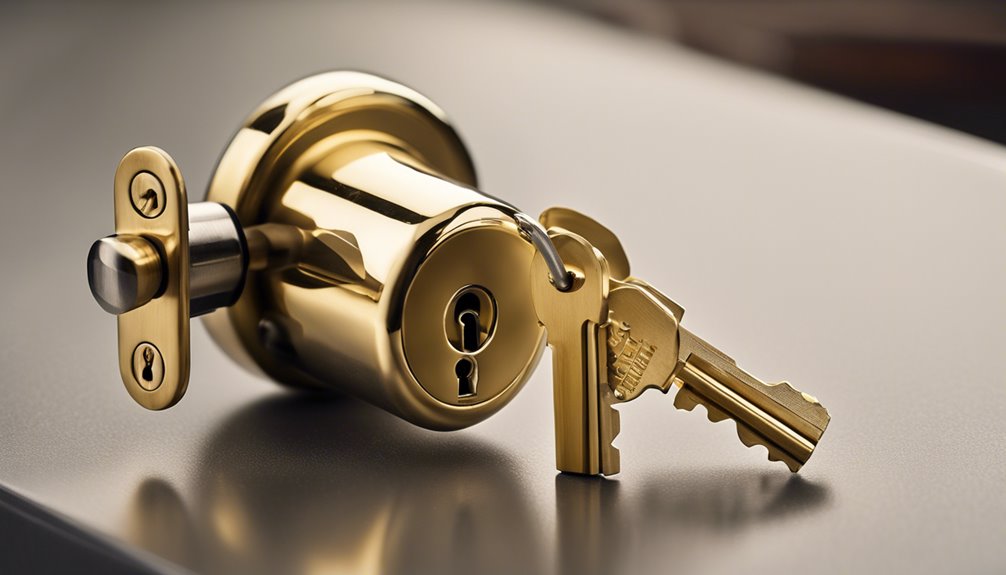
When you consider securing your property, understanding high-security locks is essential. These locks incorporate advanced technology that enhances resistance against unauthorized access.
Typically, high-security pin tumbler locks employ multiple pin stacks, requiring precise alignment for successful opening. Unlike standard locks, they contain unique key designs, often featuring restricted keyways, which reduces the risk of unauthorized duplication. Additionally, high-security locks often include key control systems, which prevent unauthorized key duplication and enhance overall security.
Moreover, many high-security locks include anti-drill plates and reinforced housings, making physical attacks less effective. You’ll find that some models offer constructed keys that are resilient to wear, providing longevity. Furthermore, the use of high-security materials further bolsters the effectiveness of these locks against tampering.
Familiarizing yourself with these features empowers you to evaluate your security needs critically, ultimately strengthening your property’s defense against potential threats.
Prioritize mastering these nuances to elevate your understanding of high-security systems.
BumpStop Technology Explained
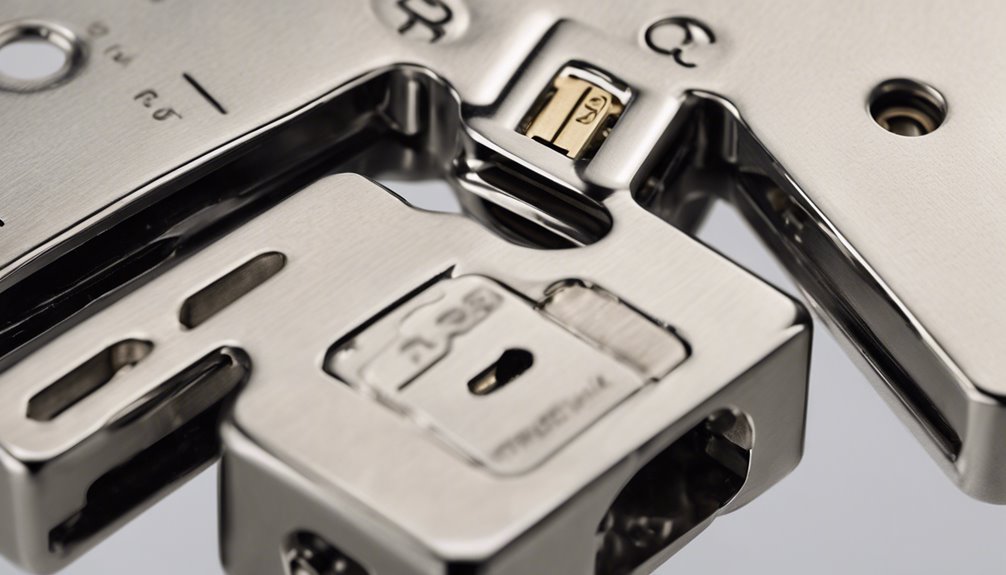
BumpStop Technology is engineered specifically to prevent unauthorized access via bump keys, which exploit vulnerabilities in traditional locks.
By enhancing the lock mechanism, it guarantees that pins remain securely positioned even under pressure. This technology complements the use of bump-resistant locks, reflecting a growing awareness of the need for enhanced lock security in the face of evolving manipulation techniques.
Bump Key Prevention
Although bump keys pose a significant security threat to traditional pin tumbler locks, BumpStop technology effectively mitigates this risk by introducing advanced design features. This innovative mechanism incorporates unique pin configurations that prevent the lock from turning when struck by a bump key. Here’s a concise breakdown of BumpStop functionality:
| Feature | Description | Benefit |
|---|---|---|
| Anti-Bump Pins | Specially designed pins with varying lengths | Thwarts bump key attack |
| Controlled Spring Tension | Adjusted spring tension on pins | Enhances resistance to impact |
| Precision Manufacturing | High tolerance in pin and cylinder design | Improves overall security |
Additionally, BumpStop technology is part of a broader trend towards high-security locks that incorporate various anti-bump features for enhanced protection. The implementation of such features aims to address vulnerabilities inherent in traditional lock designs that can be exploited by criminals.
Enhanced Lock Mechanism
While conventional pin tumbler locks are vulnerable to various attacks, the BumpStop technology redefines security through its innovative lock mechanism.
It incorporates advanced pin design that prevents the traditional bump key technique. Each pin features a unique profile, making it impossible for a bump key to align the pins correctly.
Furthermore, the BumpStop mechanism integrates a secondary locking feature that activates when detecting unauthorized bumping attempts, effectively rendering the lock impenetrable. Additionally, the technology employs pick-resistant mechanisms to further thwart unauthorized access.
Additionally, you’ll appreciate the durable materials used, which withstand wear and resist tampering.
With this system, you gain superior resilience against picking, forced entry, and bumping, ensuring unparalleled security. High-security locks, equipped with technology like BumpStop, stand out for their enhanced resistance to common intrusion methods.
Adopt the BumpStop technology, and you’ll experience a new standard in protective locking systems.
Key Control Systems Features
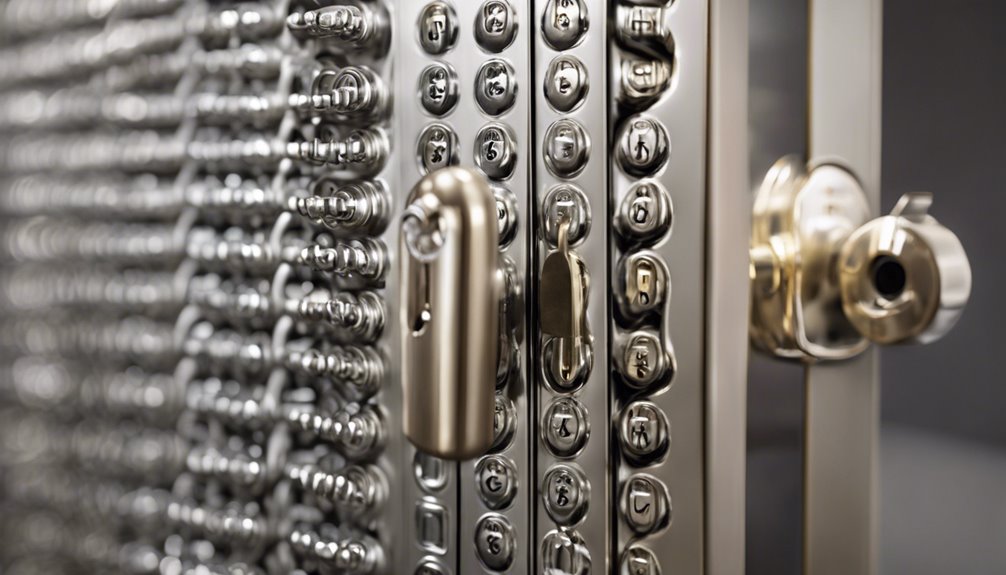
When considering key control systems, unique virtual keyways considerably enhance security by ensuring that only authorized keys can operate your locks. This feature directly addresses the issue of unauthorized duplication, as it complicates the process for anyone attempting to create copies of your key. Additionally, these systems often involve the use of specialized high-security key duplication techniques that require advanced equipment and expertise. Moreover, patented key control systems provide added protection by ensuring that only certified locksmiths can produce authorized key copies. Understanding how these elements work together can help you better secure your premises.
Unique Virtual Keyways
As you explore high-security pin tumbler locks, understanding unique virtual keyways reveals how these systems enhance overall security.
Unique virtual keyways utilize advanced software algorithms to create a virtual mapping of key cuts, greatly complicating unauthorized access. This digital control allows you to generate specific key profiles tailored to individual users while maintaining a centralized access management system. Additionally, these systems often rely on restricted key management to prevent unauthorized key duplication.
By employing a mix of physical and digital parameters, you can guarantee that each unique virtual keyway aligns precisely with the corresponding lock mechanism. This dual-layer approach not only fortifies security but also facilitates easier audits of who’s access to what areas. Additionally, high-security locks like the Medeco can significantly improve key control and overall security measures.
Effective unauthorized duplication prevention is a cornerstone of key control systems, ensuring that only authorized personnel have access to specific keys.
You can leverage features like patented key designs and restricted keyways to mitigate risks. Patented keys include unique technological advancements, such as cut patterns or advanced materials that inhibit unauthorized manufacturing. Additionally, rekeying locks can be an important step in maintaining security when faced with potential threats. Restricted keyways limit the distribution of keys to certified locksmiths only, reinforcing access control.
Additionally, electronic key management systems monitor key usage and track who’s access, while also providing immediate alerts in case of potential breaches. Implementing these systems can be complemented by techniques such as lock re-keying, which helps maintain control over key access after personnel changes or security breaches.
Employing these strategies enhances the integrity of your locking mechanisms, safeguarding sensitive areas and minimizing unauthorized access threats that could compromise security.
High-Security Lock Designs
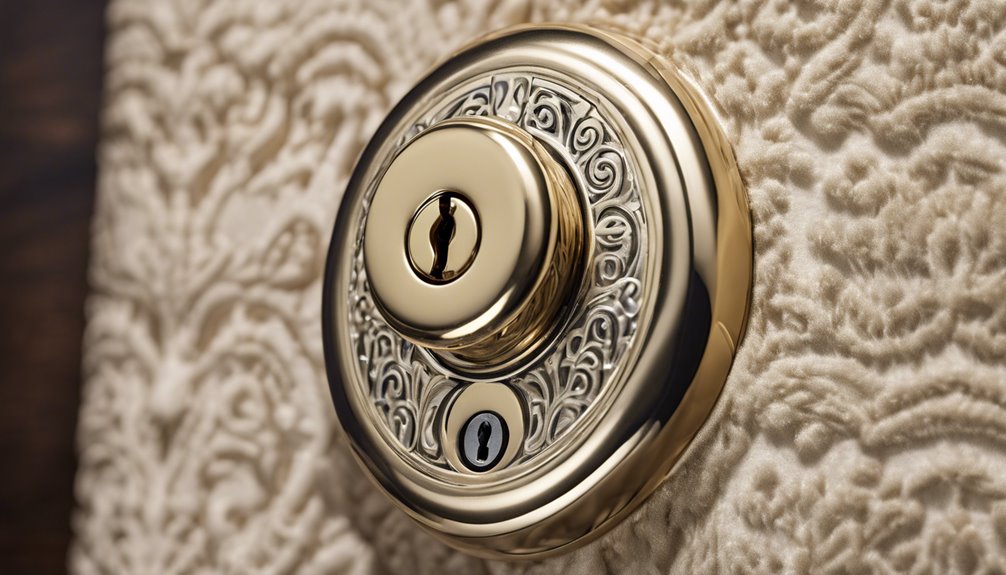
While various locking mechanisms exist, high-security lock designs stand out due to their advanced engineering and innovative features.
These locks typically incorporate multiple serrated and spool pins, creating intricate shear lines that complicate unauthorized access. Additionally, the use of specialized materials enhances durability and resistance to physical attacks.
You’ll also find designs that employ rotating discs or electronic components for added protection. Unique keyway configurations prevent common techniques, like lock picking and bumping, from being effective.
Moreover, some high-security locks integrate anti-drill plates, countersunk screws, and hardened steel inserts to thwart drilling attempts. Many leading manufacturers, such as ASSA-Abloy, are at the forefront of developing these advanced locking solutions to ensure maximum security and reliability.
Basic Mechanics of Pin Tumbler Locks
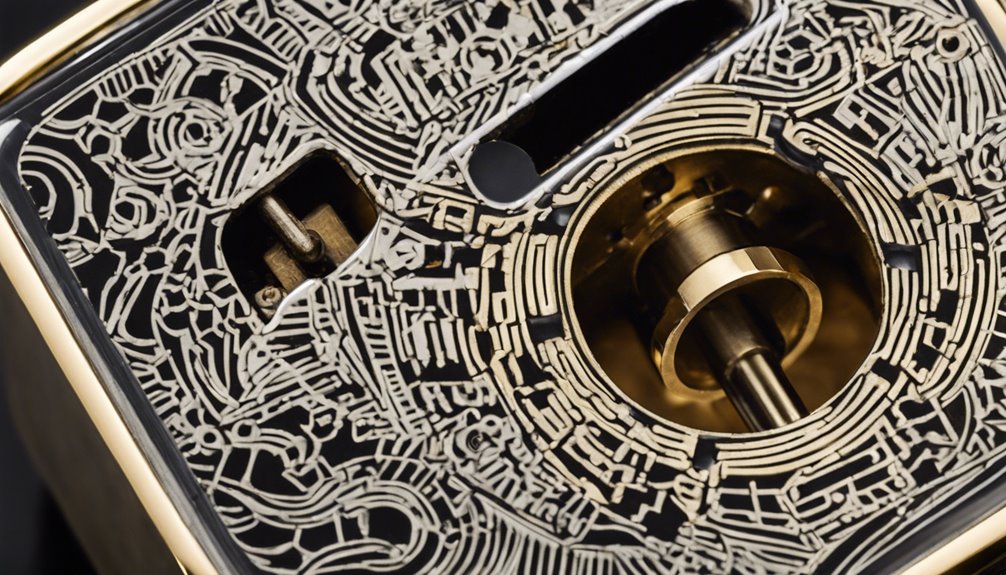
Understanding the basic mechanics of pin tumbler locks is essential for grasping how they provide security.
At the core of a pin tumbler lock, you’ll find a cylinder containing multiple pin stacks. Each stack comprises a key pin and a driver pin, which interact based on the key’s specific cut profile.
Inserting the correct key aligns these pins at the shear line, allowing the cylinder to rotate freely. If an incorrect key is used, some pins remain misaligned, preventing rotation.
The lock also includes a spring mechanism that resets the pin stacks upon key removal, ensuring security when the lock isn’t engaged.
Mastering these mechanics gives you foundational knowledge to explore high-security enhancements later.
Advanced Security Features
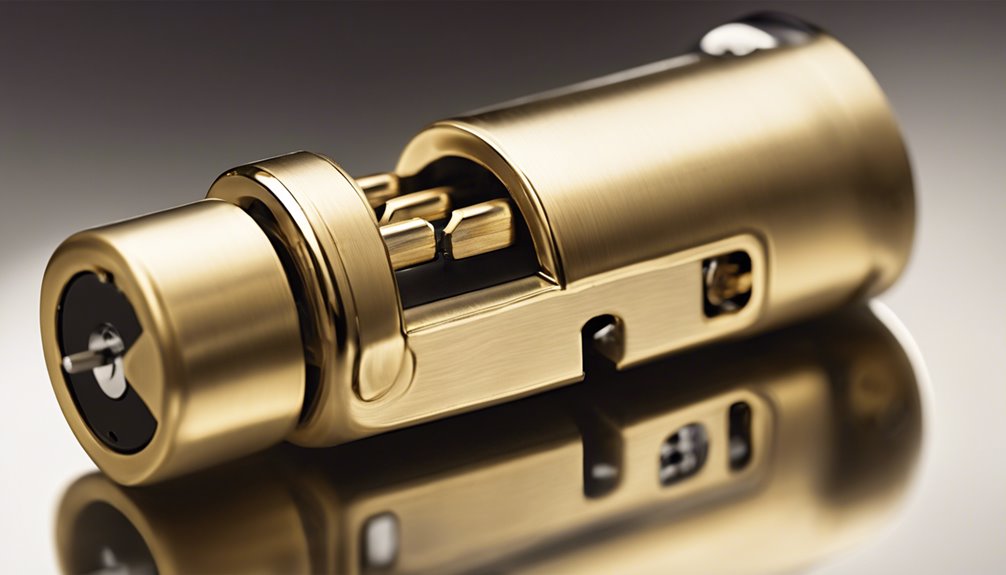
Building on the foundational mechanics of pin tumbler locks, advanced security features introduce several enhancements designed to thwart unauthorized access.
One vital enhancement is the use of spool pins, which create false sets during manipulation attempts. You might also encounter mushroom pins, further complicating the picking process.
Additionally, some high-security locks employ sidebars that engage with specially designed key profiles, ensuring only authorized keys can rotate the core. Non-linear pin configurations disrupt conventional picking patterns, while anti-drill plates protect the locking mechanism from drilling attacks.
Furthermore, precision manufacturing tolerances minimize internal slippage, ensuring maximum resistance. These sophisticated features collectively bolster the integrity of your locking system, making unauthorized entry markedly more challenging.
Understanding these elements equips you with the knowledge to select superior locks confidently.
Preventing Lock Picking Techniques
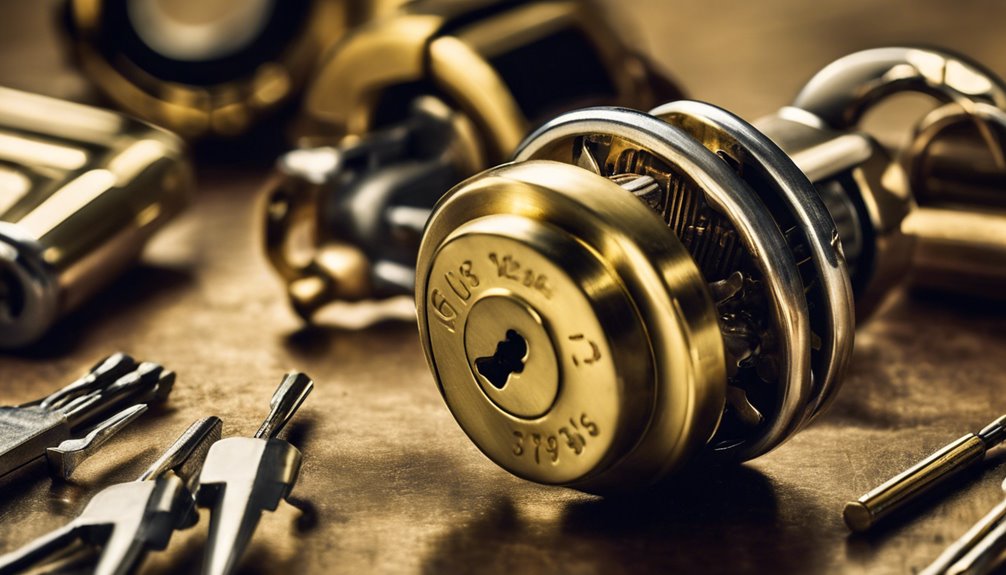
To effectively prevent lock picking, implementing a multi-faceted approach is crucial.
Start by using high-security pin tumbler locks that incorporate unique key designs, such as sidebar mechanisms and restricted keyways. These features complicate the picking process and deter unauthorized access.
Additionally, consider complementing your locks with anti-pick pins, which resist manipulation by utilizing various shapes or materials.
Strengthening the lock housing and employing hardened steel components will further protect against physical attacks.
Regular maintenance, including lubricating the lock, guarantees peak functionality and prevents wear that might facilitate picking.
Finally, educate yourself and your team on identifying suspicious activity around the lock, enhancing your response to potential threats.
Mastering these techniques can greatly minimize the risk of lock picking.
Frequently Asked Questions
How Do I Maintain My High-Security Pin Tumbler Lock?
To maintain your high-security pin tumbler lock, regularly inspect it for debris or wear.
Clean the keyway using compressed air to remove dust particles, guaranteeing smooth key insertion and extraction.
Lubricate the lock with a graphite-based lubricant, avoiding oils that attract dirt.
Test the lock’s functionality with its key multiple times to confirm it operates smoothly.
Make routine checks every few months to extend the lifespan and enhance security.
What Are the Costs Associated With High-Security Locks?
When evaluating the costs associated with high-security locks, you’ll find several factors at play.
Initial prices typically range from $100 to $300 per lock, influenced by brand and technology. Installation expenses can add another $50 to $150.
Additionally, consider the long-term benefits, such as reduced risk of break-ins and lower insurance premiums.
Maintenance and key replacement also contribute to lifetime costs, so a thorough analysis of these elements is essential for informed decision-making.
Can High-Security Locks Be Rekeyed?
Oh sure, just like you can magically turn your old bicycle lock into a gourmet coffee maker, you can definitely rekey high-security locks!
In reality, yes, high-security locks can be rekeyed, often by a professional. This process maintains the lock’s security features while allowing new keys to operate it.
However, verify that your locksmith is familiar with high-security systems; otherwise, you might end up with a very expensive decoration instead.
Are High-Security Locks Weather-Resistant?
High-security locks are designed with materials that typically enhance their resistance to various weather conditions.
When you’re considering such locks, look for those with corrosion-resistant finishes and seals that prevent moisture ingress.
Many models incorporate weatherproofing features that protect internal components from dust and water.
However, the effectiveness can vary based on the lock’s specific construction, so it’s essential to examine individual specifications to guarantee peak performance in harsh environments.
How Do I Choose the Right High-Security Lock for My Needs?
Choosing a high-security lock is like selecting a fortress for your valuables. You need to assess your specific security needs, such as vulnerability to forced entry and picking.
Look for features like hardened steel construction, multiple locking pins, and key duplication protection to guarantee reliability.
Additionally, consider the lock’s certification rating, which indicates its resistance to various attacks.
Research trusted brands and consult professionals; don’t settle for less than rock-solid security.
Conclusion
In a world where security is your fortress, high-security pin tumbler locks act as the impenetrable gatekeepers. By embracing sophisticated features such as BumpStop technology and key control systems, these locks stand firm against unauthorized access. Their intricate designs and sturdy construction deter even the most determined intruders, ensuring your property remains safe. As you secure your space, remember that investing in these locks is like installing a high-tech security detail that’s always on guard.


